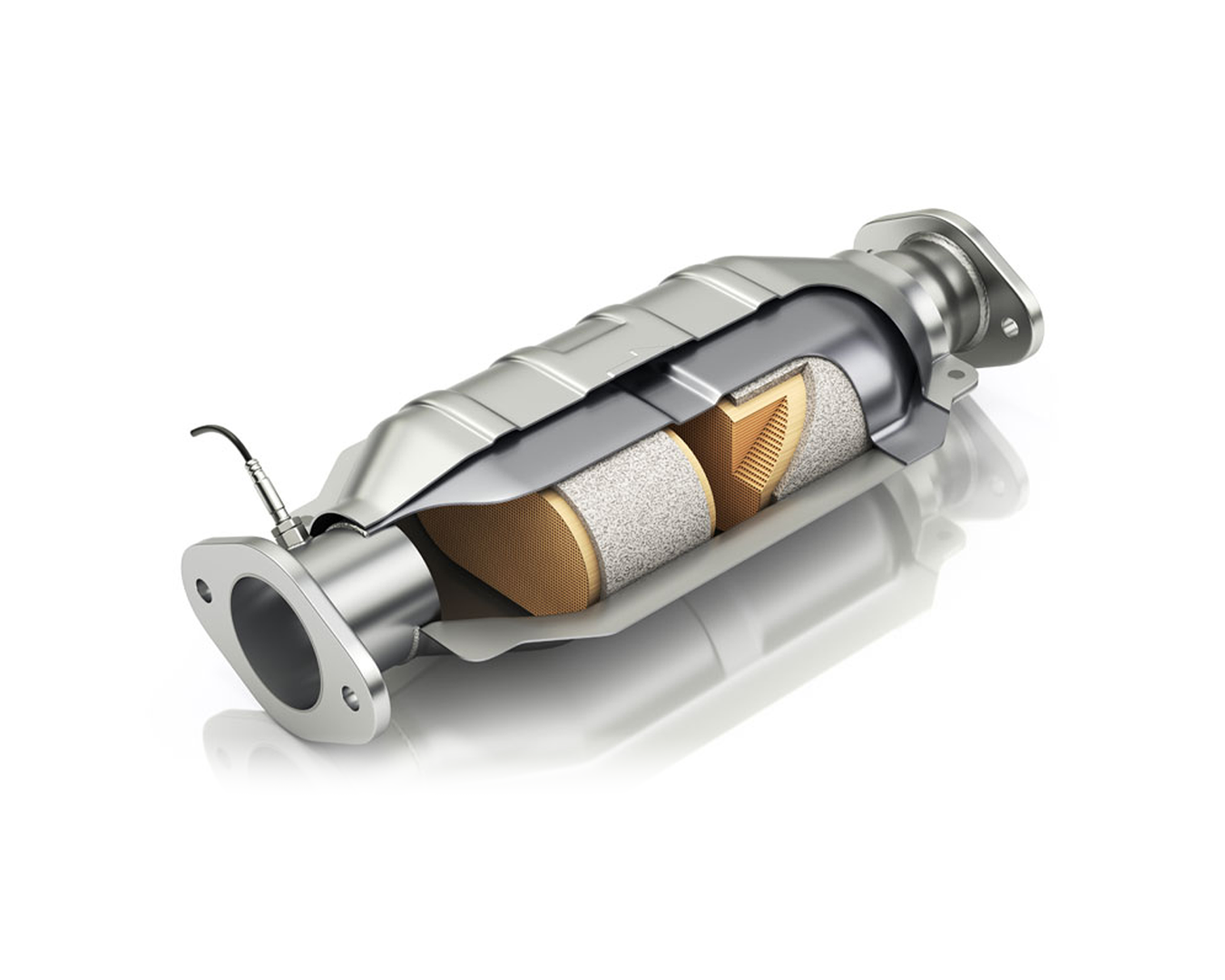There’s often confusion around GPF/OPF/PPF tuning. We wanted to help dispel some myths and provide some information to help you along the way with your tuning journey…
Keep in mind that our information on GPF-related legislation is primarily based on UK laws. Regulations in other countries may differ, and the removal of a GPF might be illegal or handled differently. In some places, GPFs aren't even required at all. The fact is, removing your GPF in the UK is illegal for any vehicle that is driven on the public road. Removing your GPF must be for off-road use only.
What is a GPF/OPF?
Referred to as a GPF (Gasoline Particulate Filter), OPF (On-Board Particulate FIlter) or PPF (Petrol Particulate Filter), it’s a filter installed into your exhaust system from factory to reduce the level of pollutants emitted from our vehicles. They are based on diesel particulate filter (DPF) technology and were developed to control particulate emissions from gasoline direct injection (GDI) engines.
In order to limit the polluting emissions from petrol cars, since September 2018 a GPF has applied to all new GDI/Petrol (Gasoline Direct Injection) cars with a specific conformity factor.
 |
 |
 |
GPF’s have been implemented to meet increasingly strict regulations aimed at reducing the environmental impact of cars. Faced with the soaring amounts of the ecological malus, it was necessary to find a solution that would significantly reduce fine particle emissions in the exhaust. The overall promise is to reduce up to 95% of the pollution generated by a petrol car. At the same time, the introduction of the Euro 6c standard has forced manufacturers to achieve a limit of 60mg/kilometre (nitrogen oxides).
How does a GPF work?
The GPF captures soot particles through the exhaust. These arrive in a honeycomb grid and agglomerate. The exhaust line heats up fairly quickly, which allows the pollution particles to be carbonised without the need for regeneration cycles (like in Diesel cars with a DPF), as petrol engines heat up more quickly than diesel engines. This allows the GPF to operate completely autonomously, without any maintenance or risk of clogging, again unlike a Diesel vehicle’s DPF filter.
The faster heating of the exhaust line allows the particles to be removed directly, evenly and imperceptibly for the driver. The gases that are filtered include hydrocarbons, azonte oxides and carbon monoxide particles. This converts the pollutants into carbon dioxide, nitrogen and water even more efficiently.
Does my car have a GPF?
As a general guide if your car was produced after September 2018 and has a GDI petrol engine (Gasoline Direct Injection) the chances are it will also have a GPF equipped to its exhaust system. You can visibly check too if you can get underneath the car or do a little bit of online research and you’ll soon have the answer. If you are looking at tuning your car too then we have a database of vehicles and will easily be able to assist you via our dealer network HERE.

So it’s not the same as a catalyst then?
It is easy to confuse the GPF with the catalyst. However, there is a real difference between the two. The catalyst reduces the toxicity of the pollutants, whereas the particle filter in petrol engines filters and removes these same particles. This means that the GPF wears out very slowly. Moreover, the GPF has been designed to last as its life span is equivalent to that of the car.
Better for the environment. but what are the downsides?
Unavoidably the particle filter of petrol engines (GPF) leads to a very slight drop in power, which remains quite minimal and hardly noticeable in use ‘according to some sources’. However, as petrol heads, any whiff of the words “a slight drop in power” often has us running for the hills to find a solution to counter it. The exhaust sound can also be slightly muffled too as it adds an extra element to the exhaust line, which can act in the same way as a silencer. They are the two main drawbacks of having a car with a GPF.
Is it legal to remove it, then?
Well, in a word, no! The official stance on it is: “Technically yes it can be removed, however this will deem your vehicle unfit for road use and will not allow your car to pass an MOT. GPF delete pipes are produced entirely for motorsport and off-road use and should not be installed to any road going vehicle.”
So essentially it sits in the same camp as a catalyst Vs decat pipe in this respect and, if you are wanting to keep your vehicle fully road legal, then a car SHOULD have both a catalyst and a GPF if manufactured AFTER the year GPF’s were a legal requirement.
What are my options?
Well, luckily, we’ve got you covered either way. If you’re wanting your car to remain fully legal and compliant to all legislations then you really only have two options. You can either buy a pre-GPF era car, or you can buy a GPF car and leave the GPF in place.
We offer tuning solutions for both GPF-equipped and non-GPF-equipped cars. HOWEVER, this is the kicker, there are owners who want to remove their GPF to negate the power drop and loss in exhaust sound. We understand that - we also like offering the best performance and drivability gains possible and we want your car to sound the way you like it, too. THEREFORE we do supply tuning solutions for those who choose to go the “GPF removal route” because some customers do want to have their vehicles for “track use only” where a GPF ISN’T then legally required. We have you covered either way!
We offer tuning solutions for off-road use and vehicles that weren’t factory-equipped with a GPF. For more details, contact your nearest MMX dealer HERE.
Interested in more MMX products for your BMW or MINI? Click HERE to explore our extensive range of hardware.
#gpf #ppf #opf #gpffilter #tuning #gpfdelete




